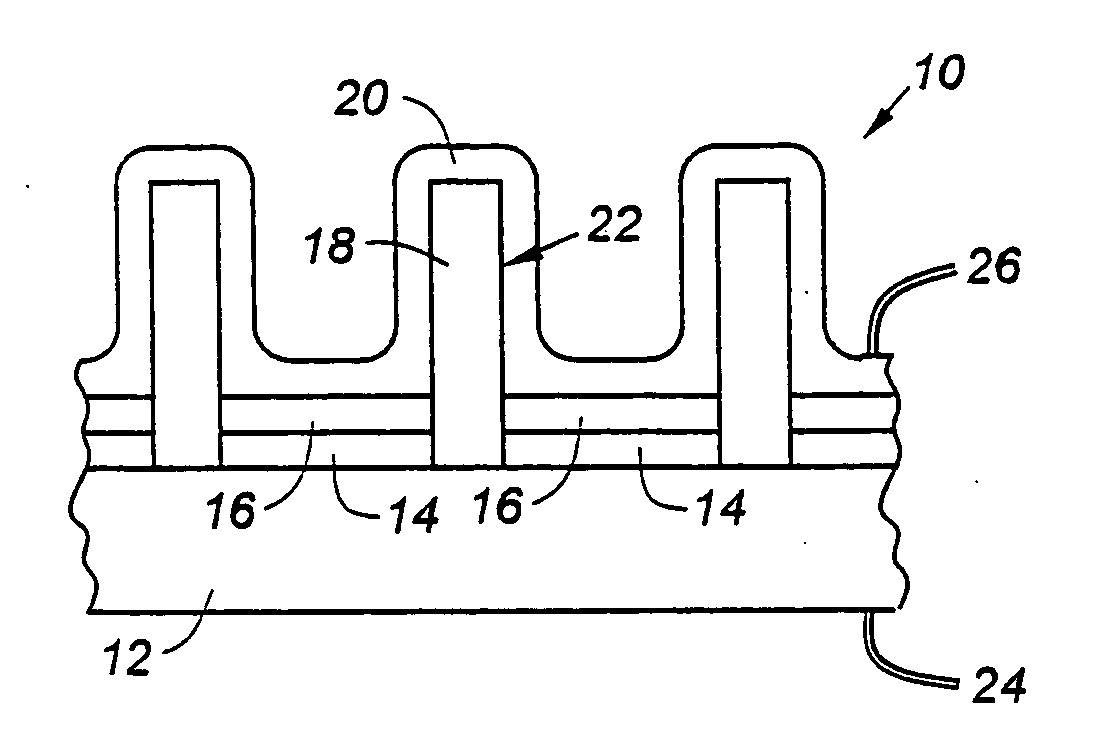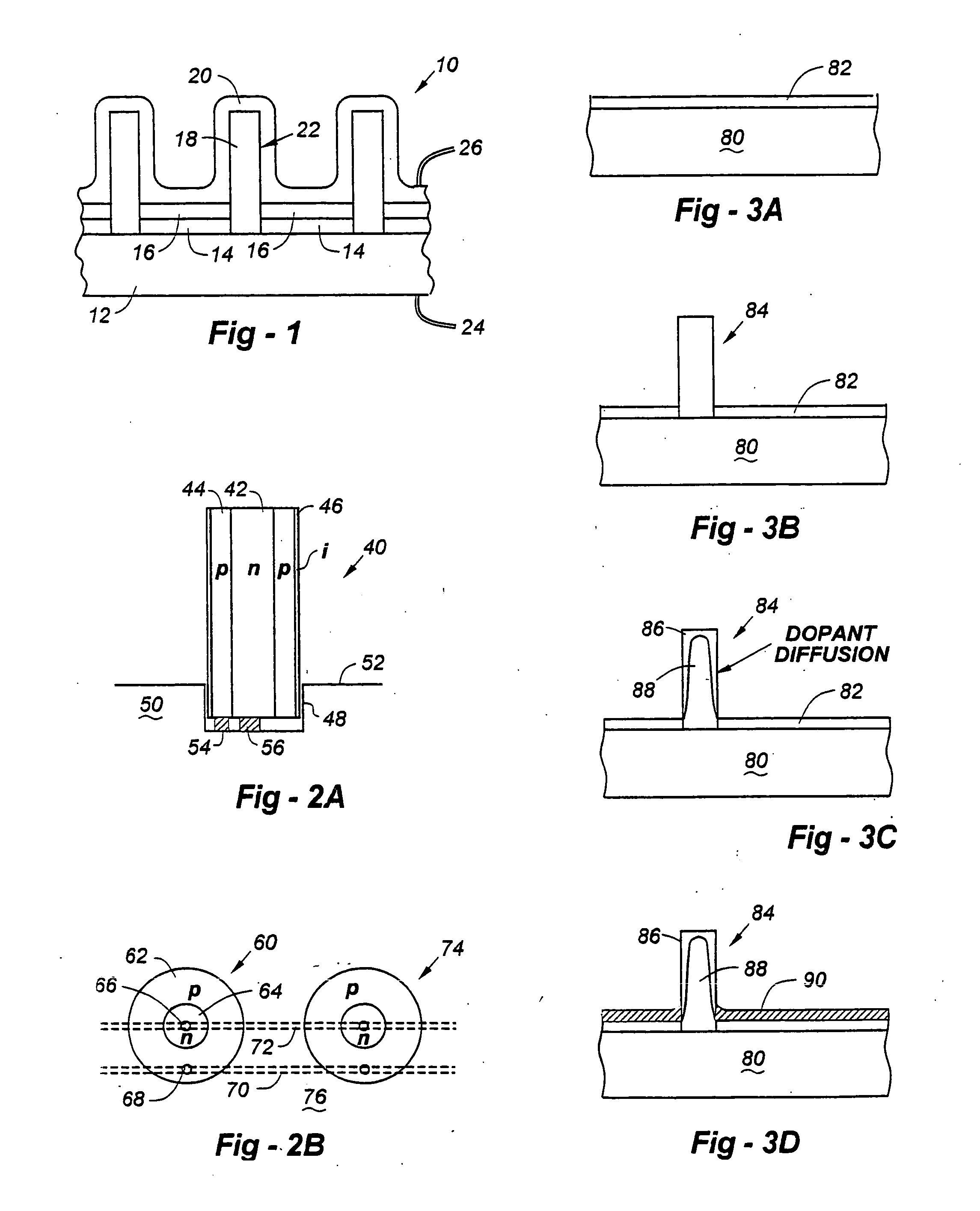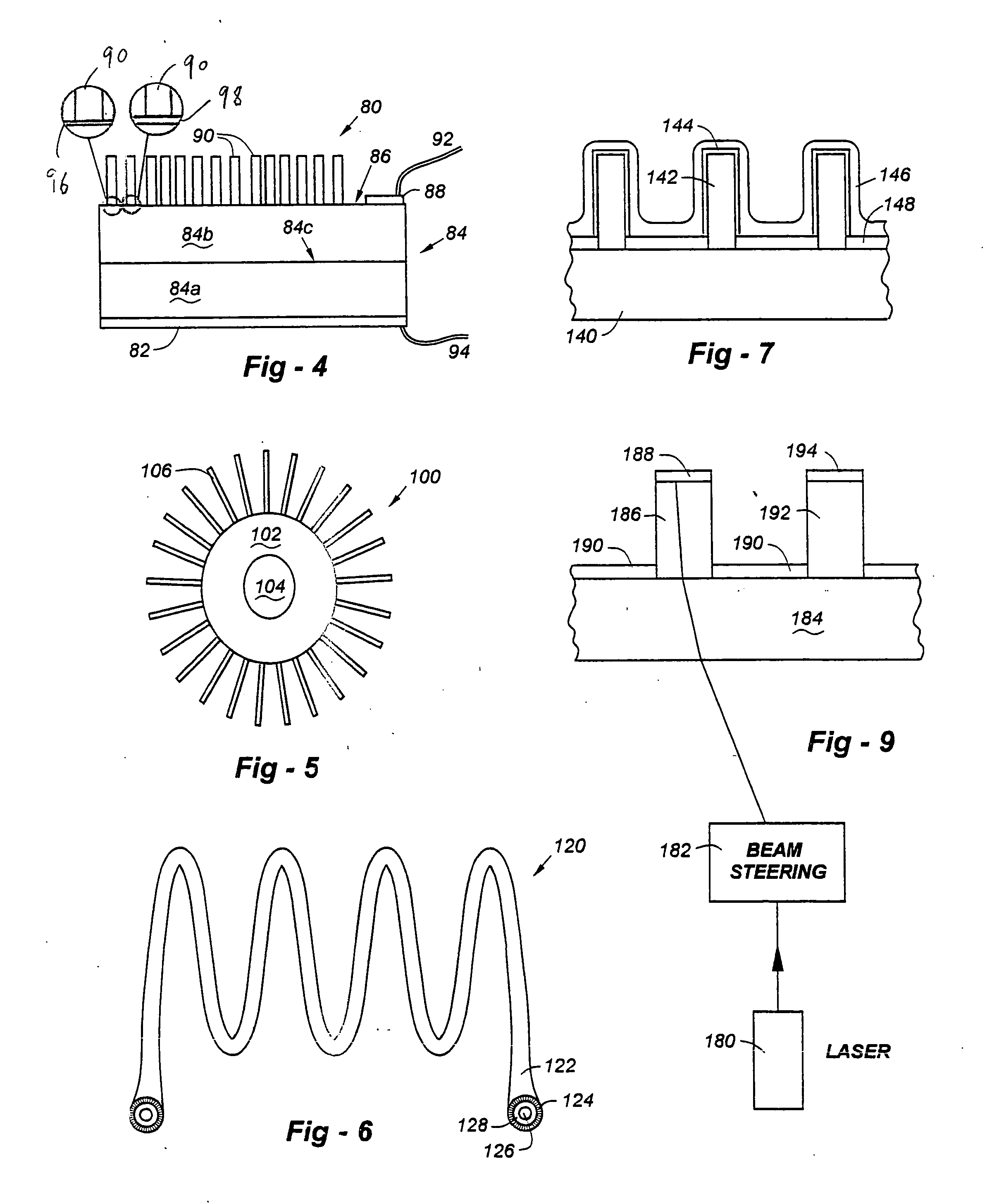Optoelectronic devices employing fibers for light collection and emission
a technology of optoelectronic devices and fibers, which is applied in the direction of thermoelectric devices, bundled fibre light guides, lighting and heating apparatuses, etc., can solve the problems of dreaming elusive, prior art fails to disclose optoelectronic devices such as solar cells, light emitting devices, and photodetectors
- Summary
- Abstract
- Description
- Claims
- Application Information
AI Technical Summary
Benefits of technology
Problems solved by technology
Method used
Image
Examples
Embodiment Construction
[0059]FIG. 1 shows a cross-section of part of an optoelectronic device, shown generally at 10, comprising an electrically conducting substrate 12, an adhesive layer 14, insulating layer 16, fiber 18, an electrically conducting layer 20, a first electrical contact 24, and a second electrical contact 26.
[0060] The fibers can be deposited on the substrate by a flocking technique, so that adhesive layer 14 is a flock adhesive layer. Flocking techniques are well known in the art, as discussed in more detail later.
[0061] For example, the conducting layer 20 may comprise a p-type doped semiconductor, and the fibers may comprise a n-type doped semiconductor so as to form a p-n semiconductor junction at the interface 22 between the conducting layer and the fiber surfaces. As will be clear to those skilled in the art, the doping pattern can be reversed (i.e. the conducting layer may comprise an p-type doped semiconductor and the fibers comprise an n-type doped semiconductor). It can be adva...
PUM
 Login to View More
Login to View More Abstract
Description
Claims
Application Information
 Login to View More
Login to View More - R&D
- Intellectual Property
- Life Sciences
- Materials
- Tech Scout
- Unparalleled Data Quality
- Higher Quality Content
- 60% Fewer Hallucinations
Browse by: Latest US Patents, China's latest patents, Technical Efficacy Thesaurus, Application Domain, Technology Topic, Popular Technical Reports.
© 2025 PatSnap. All rights reserved.Legal|Privacy policy|Modern Slavery Act Transparency Statement|Sitemap|About US| Contact US: help@patsnap.com



